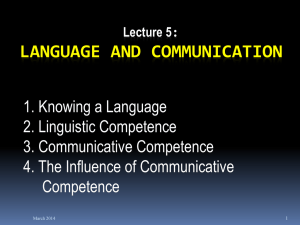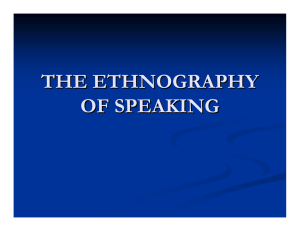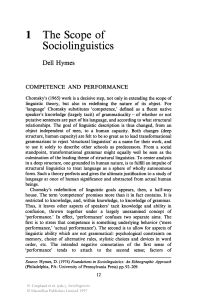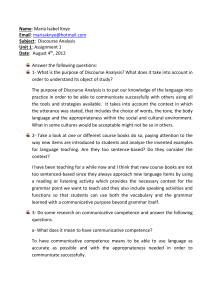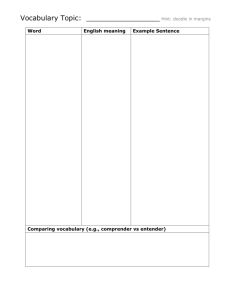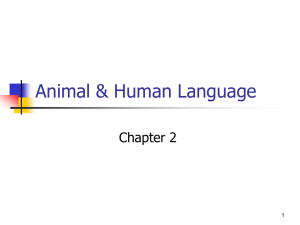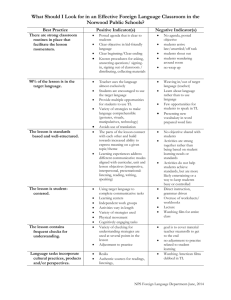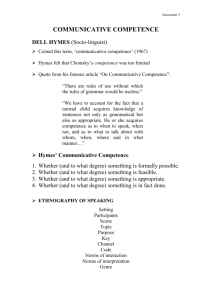Introduction to Applied Linguistics
advertisement
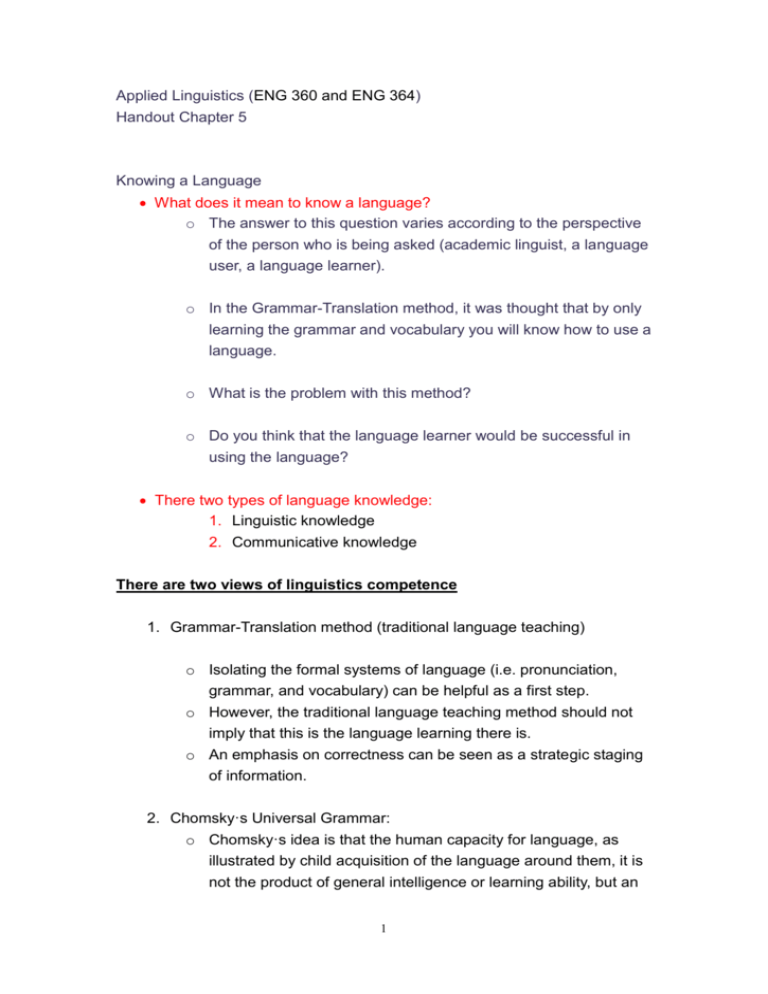
Applied Linguistics (ENG 360 and ENG 364) Handout Chapter 5 Language Knowing a Language What does it mean to know a language? o The answer to this question varies according to the perspective of the person who is being asked (academic linguist, a language user, a language learner). o In the Grammar-Translation method, it was thought that by only learning the grammar and vocabulary you will know how to use a language. o What is the problem with this method? o Do you think that the language learner would be successful in using the language? There two types of language knowledge: 1. Linguistic knowledge 2. Communicative knowledge There are two views of linguistics competence 1. Grammar-Translation method (traditional language teaching) o Isolating the formal systems of language (i.e. pronunciation, grammar, and vocabulary) can be helpful as a first step. o However, the traditional language teaching method should not imply that this is the language learning there is. o An emphasis on correctness can be seen as a strategic staging of information. 2. Chomsky·s Universal Grammar: o Chomsky·s idea is that the human capacity for language, as illustrated by child acquisition of the language around them, it is not the product of general intelligence or learning ability, but an 1 innate, genetically determined feature of the human species. o We are born with considerable pre-programmed knowledge of how language works. Problems with Chomsky·s theory: o Language becomes more biological than social and similarities between languages outweigh the differences. o Language is separated from other factors such as body language and cultural knowledge. o In applied linguistics, this theory can have a reductive and constraining effect, excluding those factors with which applied linguistics is most concerned. Communicative competence: o The communicative language theory developed by Dell Hymes in the 1960·s was a reaction to the theory of Universal Grammar and Linguistic competence. o According to Hymes, a person who linguistic competence doesn’t necessarily mean that he/she would be able to communicate using that knowledge o Hymes suggests that in order to be able to communicate language, a person should acquire four types of knowledge: Possibility. Feasibility. Appropriateness. Attestedness. Possibility o A competent speaker knows what is formally possible in a language. Example: “Me sleep now” It breaks the rules of the language and present a structure that is not acceptable in the English language. “I am going to go to sleep” is the same expression but this time it follows the rules. Feasibility o A communicative competent person knows what is feasible. This is a psychological concept concerned with limitations to 2 what can be processed in the mind. o The rules of English grammar make it possible to expand by adding a relative clause. Appropriateness o This is the third kind of knowledge to acquire to be able to be a competent language user. o Using language to suit the situation: example: “calling a police officer darling” Attestedness o It means “how something is done” Example: “Chips and fish” It is possible, feasible, and appropriate. However, people are used to saying: Fish and Chips Influences of Communicative competence o It was applied in teaching as the communicative approach. o However, people jumped to market the concept of using language into isolated teaching exercises. o Also, the issue of appropriateness was enforced to the teaching of American or British culture with no way for individual expression. Finally o Language Knowledge is a combination of the two theories. o There is no language without biology and social interaction. 3
